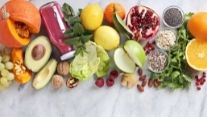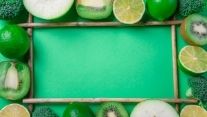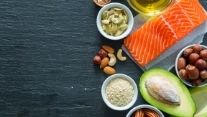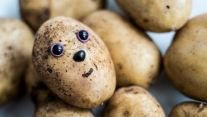As a parent we constantly worry about our child’s nutritional intake. Nutrient deficiencies can vastly affect the mental and physical health and overall growth of a child. Many vitamins are water-soluble and they have to be taken regularly to prevent a shortage in the body.
Infographic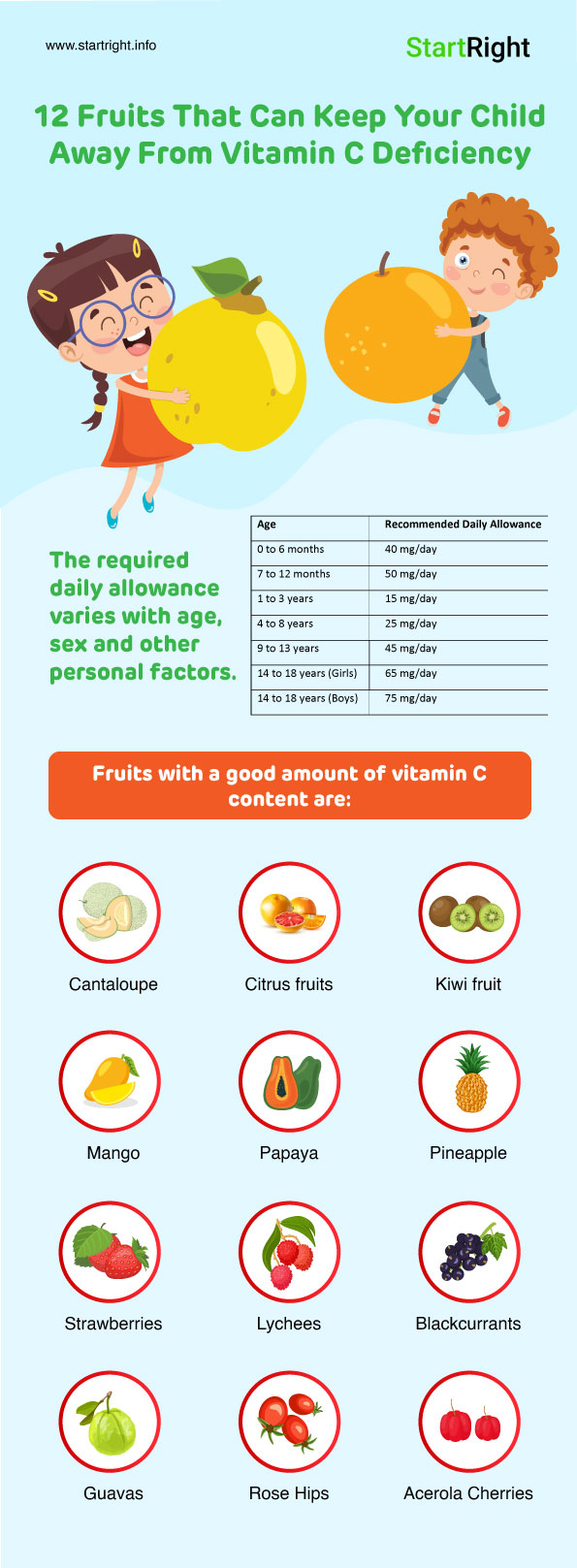 Click Here | Vitamin C is one such vitamin. It is an essential nutrient vital for the maintenance of skin, blood vessels, bones and cartilage. Additionally, it is necessary for wound healing and repair after injury. It is also a powerful antioxidant and protects cells from many diseases including, cancer. It’s also vital for collagen synthesis, connective tissue, bones, teeth and your small blood vessels. Unfortunately, our bodies cannot produce or store vitamin C. Therefore, it’s essential to consume it regularly in sufficient amounts. |
To maintain optimal levels of vitamin C in the body, researchers and doctors recommend a certain minimum range of dietary intake values. This reference value is referred to as “Recommended Dietary Allowance” (RDA). The RDA for vitamin C may be used as goals or guidelines for each person. These values depend on your age and sex and other personal factors.
For infants under one year of age, an approximate of 50 mg/day is considered adequate. The value of vitamin C required in children between 1-3 years is 15 mg/day, and increases to 25-45mg/day for children between 4 to 13 years old. There is further increase in requirement of vitamin C in adolescents, for girls between 14 to 18 years it is 65 mg/day and for boys it is 75 mg/day.
These values may be hard to keep track of, and you may be wondering how to slip in some vitamin C into your child’s diet. Luckily for all of us, nature has a solution – fruits!
Here’s a list of fruits chock-full of much needed vitamin C:
1) Cantaloupe
A single 100gm serving of cantaloupe contains 36.7 mg of vitamin C. This is easy to find in most grocery stores and the mild taste makes it suitable for picky eaters.
2) Citrus fruits
Citrus fruits like lemon, oranges and grape fruit contain about 53.2 mg of vitamin C. Surprisingly these are not the richest in vitamin C as is conventionally thought. But that does not mean it is not useful, you can incorporate a lot of vitamin C by making freshly squeezed orange juice for your child.
3) Kiwi fruit
A single 100gm serving of kiwi contains 92.7 mg of vitamin C. Kiwis are tangy and delicious and contain almost twice the amount of vitamin C as oranges.
4) Mango
A single 100gm serving of mango contains 36.4 mg of vitamin C. A great option for the summer months, you can also blend mangoes into a delicious rich smoothie.
5) Papaya
A single 100gm serving of papaya contains 60.9 mg of vitamin C. If you live in the tropics, getting your hands on fresh ripe papaya throughout the year is easy. Try to incorporate papaya into fresh fruit salads and watch your child gobble it up.
6) Pineapple
A single 100gm serving of pineapple contains 47.8 mg of vitamin C. Refreshing and tangy pineapples are great way to get your kid to consume vitamin C. If the whole fruit is too pungent for your child, try to blend it into a juice and add a very small pinch of salt.
7) Strawberries
A single 100gm serving of strawberries contain 58.8 mg of vitamin C. Berries are delicious and make for a great snack at any time of the day. You can keep it interesting by adding it as a topping on various breakfast and dessert items.
8) Lychees
A single 100gm serving of lychee contains 71.5 mg of vitamin C. These tropical fruit are juicy and delicious. If you can’t find them fresh, they can be obtained in canned form, although it will not have as much vitamin C, it is still a great option.
9) Blackcurrants
A single 100gm serving of blackcurrant contains 180mg of vitamin C. These fruits are often overlooked as a source of vitamin C, but it has almost triple the vitamin C content than citrus fruits. A handful of these will help meet your child’s RDA for vitamin C.
10) Guavas
A single 100gm serving of guava contains 228.3 mg of vitamin C. These are a fan favourite among children and can be eaten as is or seasoned with chilli, salt or lime.
11) Rose Hips
A single 100gm serving of rose hip contains 426 mg of vitamin C. These are harder to find but so good for health. Give it a try if you find at your local grocers.
12) Acerola Cherries
A single 100gm serving of Acerola cherries contains 1,677.6 mg of vitamin C. These are not always found in fresh form but can be obtained as dehydrated powders. Add them to water or shakes for a vitamin C boost.
Vitamin C is essential for various functions in our body, and is particularly important that growing children receive the required amounts. Let us provide plenty of vitamin C by giving these fruits to our children, and keep them away from vitamin C deficiency and its related conditions.
References:
Top Foods High in Vitamin C. Web MD.
https://www.webmd.com/diet/foods-high-in-vitamin-c#2.
Accessed on 28-06-2021
Vitamin C. Medline Plus.
https://medlineplus.gov/ency/article/002404.htm.
Accessed on 28-06-2021
Agarwal A, Shaharyar A, Kumar A, Bhat MS, Mishra M. Scurvy in pediatric age group – A disease often forgotten?. J Clin Orthop Trauma. 2015;6(2):101-107.
https://www.ncbi.nlm.nih.gov/pmc/articles/PMC4411344/.
Accessed on 28-06-2021





